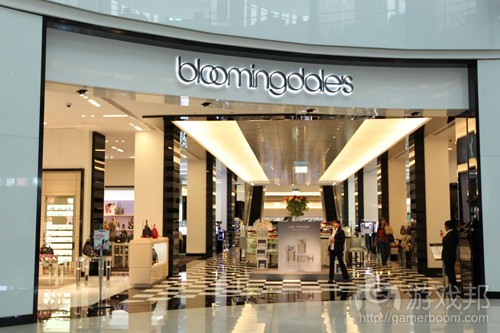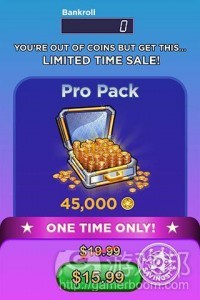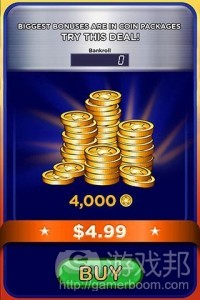开发者应以Bloomingdale的思路营销免费游戏
作者:Alfred Fung
所有免费游戏都只能在虚拟商店购买吗?观点各不相同,但如果你的基本生计来源于微交易,那么我强烈建议你学习如何营销。并非所有人都喜欢《Big Win Slots》的设计,但它的某些营销策略确实值得学习。
免费模式作为手机游戏行业的一种收益模式,已经在ngmoco的巨额收购案和Supercell的日收益创新高中证明其成功。开发者看到这些成功的神话,以及其吸引消费者之容易,所以就产生了这样一种印象:“只要你采用免费模式,玩家自然就会来了。”就在这种兴奋的心情中,开发者发布游戏后,就寄希望于上帝保佑赢利了。现在,游戏行业变了,开发者越来越倾向于在玩家生命周期的每一个阶段提前进行营销,否则他们就会损失收益。事实上,每一款游戏就相当于一家Bloomingdale商店(游戏邦注:这是一家位于纽约市的著名时尚服装百货公司)。
向玩家展示商品以鼓励消费
曾经在EA和Digital Chocolate任职的Trip Hawkins在今年的游戏开发者大会上提出一个比喻:“把你的游戏比作一家Bloomingdale,而你是它的销售经理。”你不能指望玩家自己跑到你的店面,你应该在游戏中正确的地方给他们制造消费机会。Bloomingdale的做法是,在多个触点放促销的销售点信息。大多数开发者从来没有想过把他们的游戏当作百货商店,但如果能作一下思路转换,就可以发现玩家最可能实现转化的触点。一旦你实现思考模式的转换,你就要问你自己:我是否在合适的时间找到合适的用户,并给他们提供合适的消费体验?
寻找正确的消费者
Bloomingdale很明确他们的消费者是什么样的人,这体现在商店的方方面面中,从品牌定位到专卖店布局再到价格标签。现在的手机应用的一大优点是,我们可以根据用户行为把他们分成几类消费者。根据你的商业目标制定划分标准(是的,我知道我们是做游戏的,但我们也经营业务)。例如,《Big Win Slots》有两个目标:1、增加现有付费玩家的消费额;2、把非付费玩家转化为付费玩家。两个目标对应两类玩家。第一个分类根据是,玩家的消费寿命和IAP消费量。而但凡在游戏中还没有花钱的玩家都属于第二类。确定目标可以帮助你利用不同信息开发多种玩家群体。
寻找正确的销售位置
实体百货商店很明确应该在什么地方展示商店信息或做特卖。比如,Bloomingdale的窗户促销、巨型横幅广告和货架销售。对于手机游戏,放置位置显然是不同的,更别说还受游戏类型的影响,但确定这些位置是很关键的,因为位置会极大地影响你的信息。发现适合的时间可能需要测试游戏的循环和最小化用户行为数据。无论是通过什么方法,都有必要确定游戏中什么地方能吸引、刺激或打击玩家。再者,记住目标也是很重要的。在《Big Win Slots》的例子中,如有必要考虑到创造针对现存付费玩家的低调位置和用于吸引那些狡猾的非付费玩家的显著位置。
无障碍购买体验
在Bloomingdale商店购买东西是很容易的。你找到你喜欢的店,走几步就看到你觉得好的品牌,只要刷一下卡就完成交易了。类似地,开发者必须精心制作正确的信息,这样才能让各类玩家在转化率最高的地方看到正确的交易信息。听起来很困难?这只是一开始的做法,反复才是减少消费障碍和提高转化率的关键。《Big Win Slots》最初使用的是硬编码虚拟商店促销方法,但这导致重制困难,因为每一次改变都需要重新提交。为了解决这个问题,Mobile Deluxe自从与PlayHaven合作后,就开始执行“三个正确”的原则,从而大大增加了重制的灵活性。以下是《Big Win Slots》的例子:
这个信息是针对支出介于6-14美元的付费玩家,另外当付费玩家花光金币时,游戏也会弹出这个信息。这个信息多次出现后,现在的玩家转化率差不多是40%——3倍于原来的硬编码促销方案。
上图中的虚拟商店促销信息是针对非付费玩家的,不过当付费玩家花光金子时也可能看到它。这个信息也是反复出现,结果使非付费玩家向付费玩家的转化率达到50%。
把其他人的东西卖给合适的玩家
Bloomingdale的营销手段可能无法在每一个进门的顾客身上凑效,但如果他们可以把促销信息给消费者看,特别是给那些只是进店随便看看的人呢?事实上,并非所有非付费玩家都能仅通过IAP促销就实现转化。那么,对于那些不消费但对游戏也非常忠实且玩了很久的玩家,我们该怎么办呢?以下有一个实现转化的办法:让他们看广告。虽然有些业内人士会反驳道:广告可能损害排名或留存率。但Mobile Deluxe几乎没有因为让忠实的非付费玩家看内置广告而遇到多少消极的后果。许多这些玩家事实上也变成了广告的消费者(Mobile Deluxe更感兴趣的是,广告是否会被潜在的大额玩家排斥)。
这些意味着什么?
虽然免费模式还处于快速发展阶段,但每一位开发者都能力利用它获得收益。发布应用后靠商店和广告大捞一笔的时代已经一去不复返了。免费模式的生存能力这么强,不只是因为应用被安装的可能性提高了,也是因为开发者积极地在应用被安装后执行营销策略,争取获得玩家生命周期的每一个阶段的价值。如果你是Bloomingdale商店的营销经理,这就是你要做的事。(本文为游戏邦/gamerboom.com编译,拒绝任何不保留版权的转载,如需转载请联系:游戏邦)
Becoming a Mobile Bloomingdale’s: Merchandising Free-to-Play
By Alfred Fung
Should every free-to-play game be a virtual shopping experience? Opinions vary, but if your bread and butter is microtransactions then there’s a strong case for learning how to merchandise. Not everybody will want to implement the same design strategies as Big Win Slots, but this guest post by Alfred Fung of Mobile Deluxe includes some helpful advice about thinking of your game as a department store.
Free-to-play as a revenue model in the mobile games industry has proven itself from companies publically pivoting to titles grossing jaw-dropping daily revenues. Developers seeing these successes and recognizing the low barrier of entry for consumers has created a fervor of “if you build it, they will come”. In all the excitement, developers would release a title, cross their fingers, and pray for monetization. Today, the industry is changing as developers are becoming proactive in merchandising at every phase of a player’s lifecycle and capturing revenue otherwise lost. Each game is effectively becoming a mobile Bloomingdale’s.
Merchandising (display your goods to encourage players to transact)
Trip Hawkins (formerly of EA and Digital Chocolate) offered that comparison at this year’s GDC: “Think about your game like you’re the merchandising manager at Bloomingdale’s”. Instead of relying on players to enter your storefront, you should create purchase opportunities for them in areas of the game which make the most sense. Bloomingdale’s does this with promotional point-of-sale messaging at multiple touch points. Most developers would never think about their game as a department store, but altering that train of thought will reveal those touch points where your players are likely [nay, desire!] to transact. Once you make that paradigm shift, you should then ask yourself: Am I communicating to the right users at the right moments and presenting the right purchase experience?
Segmentation (establish who the right users are to merchandise)
Bloomingdale’s understands who their customers are, and reflects it in everything from its overall brand positioning to a boutique-store layout with relevant labels carrying segment-specific price points. The beauty of mobile today is that we can figure out our relevant segments based on user behavior. Devising segments on specific criteria depends upon your business objective [yes I know we make games, but we’re also running a business]. For example, Big Win Slots has two goals: 1) Upsell existing monetizers; and 2) Convert non-monetizers into monetizers. In establishing segments for upsell, users are targeted according to lifetime purchases in parallel with In-App Purchase (IAP) coin packages. In establishing segments for converting non-monetizers, another target was simply added for those users who have spent $0 in the game thus far. Having identified your goals will ease how you carve out multiple customer groups whom you can then reach through different messages.
Placement (figure out where the right places are to merchandise to your users)
Brick and mortar department stores have clearly defined locations to display offers or special deals. Bloomingdale’s rocks window promotions, floor-to-ceiling banners, and rack sales. Placement is obviously different in mobile and even varies according to game genres, but defining these moments is crucial – placement will greatly influence your message. Discovery of the right moments can entail both playtesting game loops and mining user behavior data; either way, it’s imperative to identify places within the game where users are engaged, frustrated, or ready to exit their session. Once again, it’s important to keep in mind your goals. In the case of Big Win Slots, it was essential to factor in the desire to create unobtrusive placements for upselling existing monetizers as well as obtrusive placements, which would capture the attention of those wily non-monetizers.
Frictionless purchase experience (give the right merchandising messages to the right users at the right moments)
Making a purchase at a Bloomingdale’s is easy. You find the department you like, take a few steps and discover you’re standing next to brands you also find appealing. Executing your transaction is a smile and a card swipe away. Likewise, the developer needs to craft the right messages so that each segment is offered the appropriate transaction at the place with the highest likelihood of conversion. Sound tough? It is in the beginning – but iterating is the key to reducing friction and increasing conversion. Big Win Slots initially ran hard-coded virtual good promotions, but this made it cumbersome to iterate as each change required a resubmission. To accommodate for this, Mobile Deluxe has since partnered with PlayHaven, enabling execution on the right users, right placements, and right messages, all the while providing the flexibility to iterate on the fly. Here are a couple of examples with Big Win Slots:
This message reached Big Win Slots’ monetizers who had spent between $6-$14 within the app and appeared at the moment they ran out of coins. After multiple iterations of the message and creative, conversion rates are now almost 40% – more than three times higher than the original hard-coded upsell.
This virtual good promotion was upsold to non-monetizers and also appeared at the moment the user ran out of coins. This creative also saw numerous iterations and has generated a 50% increase in converting non-monetizers into monetizers.
Advertising (sell other people’s stuff to the right users)
Bloomingdale’s might not be selling every impression for each unique user who walks through their doors [yet!]. But, what if they could sell those eyeballs, and more importantly, what if they could sell only the eyeballs for non-buying browsers? The fact is, not all non-monetizers can be upsold through IAP alone. What about all those users who don’t make a purchase but are also very loyal and play for a long time? There’s an additional dimension to help reach the goal of converting non-monetizers into monetizers: show them ads. While some industry voices will lobby that showing ads may hurt ratings or retention, Mobile Deluxe has experienced little, if any, negative results by showing our loyal non-monetizing base in-app advertisements. Many of these players have been effectively transformed into ad-viewing monetizers as well. [The more interesting story is whether showing ads turns away a potential whale, which Mobile Deluxe is evaluating.]
What does this all mean?
While the free-to-play revenue model continues on with its massive growth phase, each developer has the ability to wrest control of its mobile merchandising. Gone are the days of releasing an app into the wild and hoping the store or advertising rake in the dollars. The viability of free-to-play isn’t just based on the barriers for install being low – it’s also based on the developer’s ability to merchandise its goods after the install to capture value at every phase of a player’s lifecycle. After all, that’s what you’d do if you were the merchandising manager at Bloomingdale’s.(source:gamesbrief)
上一篇:探索游戏的新内容和玩家留存理论
下一篇:阐述游戏设计经验之游戏机制(三)











































